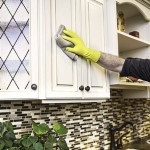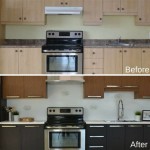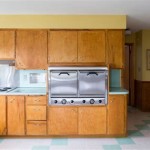Sanding Kitchen Cabinets: A Comprehensive Guide for DIYers
Revitalizing your kitchen cabinets through sanding can bring a fresh, updated look to your home. While it may seem like a daunting task, sanding kitchen cabinets yourself is achievable with the right tools, preparation, and technique. This comprehensive guide will walk you through the essential steps to ensure a smooth and successful sanding experience.
Gather Your Tools and Materials
Before starting, gather the necessary tools and materials: sandpaper (various grits), sanding block or electric sander, orbital sander, tack cloth or vacuum cleaner, safety glasses, dust mask, and rags.
Prepare the Cabinets
Clear the cabinets of all contents and hardware. Remove doors and drawers for easier sanding. If the cabinets have a durable finish, lightly sand with 220-grit sandpaper to create adhesion for the new paint. For cabinets with peeling or cracked finishes, use 120-grit sandpaper for initial stripping.
Start Sanding
Begin sanding with the coarsest sandpaper (120-grit) using a sanding block or electric sander. Work in small sections, sanding with the grain of the wood. Once the majority of the finish is removed, switch to a finer grit (220-grit) for smoother sanding. For detailed areas, use an orbital sander with a fine-grit sanding pad.
Sanding Techniques
Use an even, consistent pressure while sanding. Avoid applying excessive pressure that may gouge the wood. Keep the sandpaper or sanding pad flat against the surface. For harder woods, use a lower grit sandpaper initially to break through the finish.
Removing Dust and Debris
Regularly wipe away dust and debris using a tack cloth or vacuum cleaner. This prevents sanding residue from clogging the sandpaper and affecting the finish. After sanding, perform a final thorough cleaning to remove all dust particles.
Refining and Finishing
For a smooth, polished finish, use a very fine grit sandpaper (400-grit or higher). Gently sand the surface with circular motions. Once satisfied with the sanding results, wipe down the cabinets with a damp rag to remove any remaining dust. Allow them to dry completely before applying primer or paint.
Additional Tips
Wear safety glasses and a dust mask to protect yourself from dust particles. Use a sanding block for better control and to prevent uneven sanding. If you have intricate or decorative cabinets, hand-sanding is preferable for greater precision. Consider renting an orbital sander for faster and more efficient sanding.
By following these steps and using proper techniques, you can achieve professionally sanded kitchen cabinets that will enhance the beauty and functionality of your kitchen for years to come.

How To Paint Kitchen Cabinets Like The Pros

How To Refinish Kitchen Cabinets Diy

Diy Staining Oak Cabinets Eclectic Spark

How To Paint Pressed Wood Kitchen Cabinets Choice Cabinet

Diy Kitchen Cabinets 25 And Easy Ideas For An Update Joyful Derivatives

How To Paint Kitchen Cabinets A Step By Guide Confessions Of Serial Do It Yourselfer

Distressed Kitchen Cabinets How To Distress Your

How To Paint Laminate Kitchen Cabinets Perfect Finish Tips

How To Paint Kitchen Cabinets Without Sanding Sustain My Craft Habit

Painting Kitchen Cabinets
Related Posts








